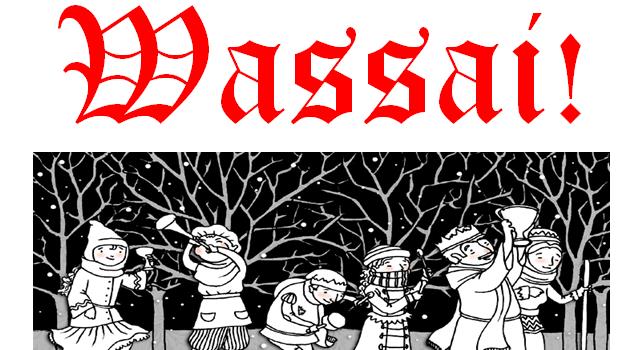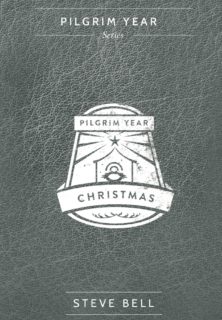The Feast of Epiphany (January 6) is the Twelfth Day of Christmas; the Eve of Epiphany, therefore, is known as the Twelfth Night -- counting from Christmas Eve -- and there are assorted customs and superstitions associated with it, as there are with many of the Christian holidays.
Some folks believe it's unlucky to leave Christmas decorations up after Twelfth Night; others leave them up through Epiphany. Another is the serving of a special 'Twelfth Night Cake', in which two pieces would include a dried pea or bean. The fortunate recipient of one of these would be "royalty for a day" -- regardless of his or her true station in life. Dubbed the "Lord (or Lady) of Misrule", he or she was entitled to "party hearty" and indulge in music, dance, drink and of course...this lovely rich cake!
Canadian singer-song-writer Steve Bell, in his "Pilgrim Year" series shares some insights into Twelfth Night -- beyond the carousing.
First off, "wassail" derives from Old English 'was hael', meaning "Be you healthy"...and down through the ages this has been distilled into "Hello" -- a greeting that wishes 'wholeness' upon each one so bestowed. He suggests we keep that in mind every time we meet someone casually on the street. Isn't it a lovely thought that by saying, "Hello!" we are really saying "Whole be thou!" (Just as, it is believed, by saying "Good-bye", we're really saying, "God be with ye".)
Not all of that drinking was purposeless, though. It was believed that the tradition of wassailing was two-fold. There was the "house-visiting" practice, where folks carolled house to house to bring good cheer and offer a drink from the wassail bowl in exchange for gifts. Then there was the "orchard visiting". It was thought that singing and drinking to the health of the fruit trees in the orchards 'round about would bless the trees so that they would thrive. The blessings would frighten evil spirits so that there would be a healthy harvest of fruit in autumn.
As Steve writes...
One folktale tells of the Apple Tree Man, the spirit of the oldest tree in the orchard who, when offered the last cup of cider, revealed in return the location of hidden treasure...
-- Steve Bell, Pilgrim Year: Christmas, "Twelfth Night", p. 72, Novalis, Toronto, 2018
Now then. In the Judaeo-Christian tradition -- indeed in other world religions/faith expressions -- the Tree of Life figures large. A sacred tree, producing fruit...where have you heard of that before?
In Christian tradition, Jesus -- through and/or on his cross -- is represented by the Tree of Life, "...whose fine fruit," Steve Bell writes, "...sustains our lives and brings joy, delight and good neighbourliness."
| Traditional "Tree of Life" Quilt Pattern |
Jesus Christ the Apple Tree - Elizabeth Poston, 1905 - 1987
Performed by Seraphic Fire, conducted by Patrick Dupre
And now to all who stumble upon this post...
To Life! L'chaim!
Blessings for Twelfth Night...
and come the morrow,
may you have your Epiphany!


No comments:
Post a Comment